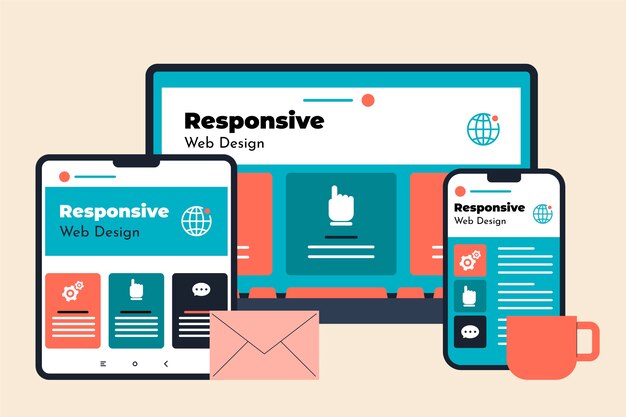Introduction
Augmented Reality (AR) is transforming the mobile app landscape by seamlessly blending digital elements with the physical world. With advancements in AR technology, businesses and developers are integrating AR features into mobile applications to enhance user engagement and provide innovative solutions. This article explores the key use cases of AR in mobile apps and examines its future potential.
Use Cases of Augmented Reality in Mobile Apps
1. Retail and E-Commerce
AR Augmented Reality has revolutionized the shopping experience by enabling customers to visualize products before purchasing them. Leading retailers such as IKEA and Sephora use AR-powered apps that allow users to see how furniture would look in their homes or how makeup would appear on their faces. This technology reduces the uncertainty of online shopping and enhances customer satisfaction.
2. Gaming and Entertainment
The gaming industry has been a major driver of AR adoption in mobile apps. Games like Pokémon GO have demonstrated how AR can create immersive experiences by integrating virtual elements into the real world. Beyond gaming, AR is also being used in interactive storytelling and live entertainment, providing users with engaging and dynamic content.
3. Education and Training
AR is transforming education by making learning more interactive and engaging. AR-enabled mobile apps allow students to visualize complex concepts in subjects such as science, history, and mathematics. Additionally, AR is being utilized in professional training programs, such as medical simulations and industrial workforce training, to improve skill acquisition and retention.
4. Healthcare and Telemedicine
The healthcare sector is leveraging AR technology for various applications, including medical training, patient diagnostics, and remote assistance. AR-powered apps enable surgeons to visualize organs in 3D during procedures, enhancing precision and safety. Furthermore, AR is being used to educate patients about their conditions and treatment options.
5. Real Estate and Interior Design
AR applications in real estate allow potential buyers to take virtual tours of properties without physically visiting them. This saves time and enhances decision-making. Additionally, interior design apps with AR functionality enable users to experiment with different layouts, colors, and furniture arrangements in their living spaces before making any changes.
6. Navigation and Tourism
AR-based navigation apps provide users with real-time directions and contextual information overlaid on their surroundings. Tourists can explore historical sites with AR guides that offer immersive storytelling and interactive experiences. Cities and museums are also incorporating AR to enhance visitor engagement and provide informative content.
7. Automotive Industry
The automotive sector is integrating AR into mobile apps for improved user experiences. AR-powered heads-up displays (HUDs) provide drivers with essential information, such as speed, navigation, and hazard warnings, without diverting their attention from the road. Additionally, AR is used in vehicle maintenance apps to guide users through repairs and troubleshooting.
Future Potential of AR in Mobile Apps
As AR technology continues to evolve, its applications in mobile apps are expected to expand significantly. Here are some key areas where AR is likely to make a substantial impact in the future:
1. 5G and AR Integration
The rollout of 5G networks will enhance AR experiences by providing faster data speeds and lower latency. This will enable real-time AR applications with seamless performance, making it possible to develop more complex and interactive mobile apps.
2. AI-Powered AR
The integration of Artificial Intelligence (AI) with AR will enhance object recognition, user interactions, and personalization. AI-driven AR apps will be able to adapt to user preferences, provide contextual recommendations, and improve overall accuracy in real-world applications.
3. Wearable AR Devices
While AR is currently accessed mainly through smartphones, the future will see increased adoption of AR wearables such as smart glasses. These devices will complement mobile apps by providing hands-free AR experiences in various industries, including healthcare, logistics, and remote collaboration.
4. Augmented Reality in Social Media
Social media platforms are already integrating AR features, such as filters and effects, to enhance user engagement. In the future, AR-powered social experiences will evolve further, allowing users to interact with virtual objects and participate in immersive events in real time.
5. AR Cloud and Persistent AR
AR cloud technology will enable shared AR experiences by allowing digital content to persist in real-world locations. This will pave the way for multi-user AR applications, where people can interact with the same virtual objects from different devices and locations.
6. Enterprise and Industrial Applications
Businesses will increasingly adopt AR for remote collaboration, maintenance, and training. AR-powered mobile apps will enhance productivity by providing real-time data visualization, remote assistance, and interactive workflows for employees in various industries.
Conclusion
Augmented Reality is reshaping the mobile app industry with its diverse applications across multiple sectors. From enhancing shopping experiences to revolutionizing education and healthcare, AR has proven to be a game-changer. With advancements in AI, 5G, and wearable technology, the future of AR in mobile apps looks promising, offering even more innovative and immersive experiences for users worldwide.





